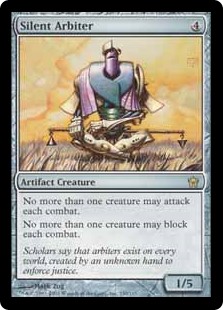Back in the days when LAN gaming was still common I played excessive amounts of the Starcraft video game. After Magic, I’ve logged more hours playing this futuristic real-time strategy game than any other. Countless rainy days and late nights were spent on the home network computers, duking it out with siblings and relatives for ultimate supremacy and survival.
The reason behind this is twofold. Firstly is that I relished LAN gaming. Unlike nowadays, where nearly every multiplayer computer game forces you to play online, you used to be able to easily play with your opponents in the same house, the same floor, the same room. Worries of latency, dropped connections, or subscriptions were nonexistent, and the only real concern was arranging when your opponents were available. Sure, playing over the internet is much easier for logistical reasons, but there’s something much more enjoyable about having those you’re fighting within earshot. It made it more social. It made it more fun. Once the industry forced everyone onto the internet, that rewarding part of the gaming experience was lost.
That’s, ironically, what brought me back into board gaming heavily. After a decent of online gaming, I came to realize that I wasn’t getting the same level of enjoyment as I had done during my days of Starcraft, Quake, Age of Empires, and a myriad of others. I missed having the other people nearby. I wanted to play with individuals, not just anonymous avatars and half-formed identities over a headset.
The second reason was because of how well balanced the faction system of Starcraft is. In that game, you could play as one of three space-faring factions: the utility-based Terrans, who were keen on big tanks and lots of guns, the hive-minded Zerg, who enjoyed swarming you to death, and the high-minded Protoss, who fostered expensive but devastatingly powerful units. Each faction fared well against one of the other races but struggled with the other, and yet the game itself was remarkably balanced. Because of this, there was often loads of different strategies to use.
Which should sound somewhat familiar, because the same thing holds true for Magic.
In my case, I always preferred the Protoss. I favor longer games that allow for deeper strategy, and although weak at the beginning, the Protoss thrive on that notion. In exchange for a slower buildup and a smaller army size, however, you are rewarded with units that are capable of taking out opposing forces with far fewer numbers. The Zerg, by contrast, are all about simply overrunning everyone and everything with sheer volume of expendable units. Unsurprisingly, the Zerg were my least effective faction to play, and the one I was usually most frustrated to play against.
This too translates to my Magic experience. I would rather stare down one 20/20 creature than 20 1/1s. Even though both are equally viable choices, thanks to the more Protoss-friendly way of thinking and deckbuilding, I find token armies with lots of expendable creatures much harder to control than singular targets, especially in multiplayer settings. I also don’t find large token armies all that exciting or creative, instead preferring focusing on fewer targets. I’m just not a Zerg player at heart.
Stopping the swarm, on the other hand – that I can do. I’m always on the lookout for tools for stemming the tide of large token throngs. Tools like this week’s pick.
Today we have: Silent Arbiter.

Name: Silent Arbiter
Edition: Fifth Dawn / Conspiracy
Rarity: Rare
Focus: Combat Manipulation
Highlights: Silent Arbiter may be a quiet individual, but its action speaks volumes. This card has the ability to singularly alter the course of combat during the game, forcing players into situations where once side will be at a distinct disadvantage over the other. This is particularly handy in cases where you’re trying to stop lopsided combat, such as staring down far more creatures than you can block. At the same time, it’s also helpful for causing lopsided combat if you have the upper hand and want to stomp over your opponent’s defenses.
At four colorless mana, this artifact creature is both affordable to cast and can be used in any Commander deck where you’d like to force more one-on-one creature combat. This can be helpful if you have bigger creatures then your opponent can block with, forcing them into positions where they’ll lose their creature or take damage.
The creature itself is also resilient, as it has a fairly high toughness for such a utility based creature. This alone can be advantageous, allowing you to use it as a blocker if necessary for small and medium-sized creatures looking to break through your ranks.
Beyond being a mostly defensive creature and having poor attack credentials, the only real caveat to Silent Arbiter is that in Commander games where creatures are the major focus, it can potentially slow the tempo of the game down. Don’t be surprised if some people find that a little trite after a while. That said, the opposite of that can also be true: Silent Arbiter can serve as a useful political tool if one player has a distinct creature advantage going, effectively buying the table time to respond and giving you some political goodwill.
Yes, whether used to mount an unstoppable offensive action or create a defensive seawall against your opponent’s armada, Silent Arbiter can be wielded to your advantage.
That is, unless your advantage is by sheer numbers.
Keep an eye out for us to be regularly featuring other more accessible-but-worth-it Commander cards going forward. In the meantime, we’ll keep the light on for you.
![]()
You can discuss this article over on our social media!
Do you have a particular Commander card to suggest for us to shine a future Spotlight on? You can send suggestions to ryan@cardboardrepublic.com
